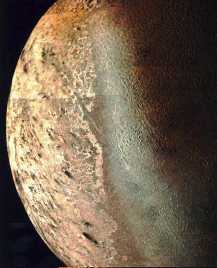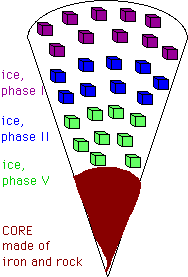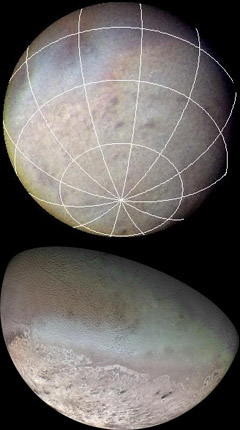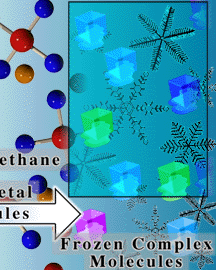This is an image of Triton that has been image processed.
Click on image for full size
NASA
Surface of Triton
Image processing can produce a view such as one might see if you were present on the surface of Triton.
You might also be interested in:

How did life evolve on Earth? The answer to this question can help us understand our past and prepare for our future. Although evolution provides credible and reliable answers, polls show that many people turn away from science, seeking other explanations with which they are more comfortable.
...more
This beautiful image of Triton reveals many interesting features of its surface. The surface of Triton is halfway between Ganymede's and Europa's (two of Jupiter's moons). Ancient portions of the surface
...more
Triton was discovered by W. Lassell in 1846. Of the 8 moons, it is the 2nd farthest from Neptune, with a standoff distance of 354,800 km. Triton may be one of the largest of the icy moons, is comparable
...more
When the Voyager mission flew by Triton, it took the spectra of the surface. The spectra matched that of ice and also several different kinds of snow (crushed ice). The Voyager spacecraft could not measure
...more
The diagram to the left shows a drawing of the possible interior of Triton. The composition of Triton is mostly ice, therefore there is probably a small core of some rocky material buried inside, overlain
...more
Triton is the largest moon of Neptune. It is a very unusual moon. The poles of Triton are especially interesting. Triton has a polar ice cap at the South Pole. Earth, of course, has ice caps at its poles
...more
The atmosphere of Neptune is very similar to that of Uranus, and unlike that of Saturn and Jupiter. On Jupiter and Saturn, the atmosphere is mostly composed of the simple molecules hydrogen and helium.
...more
There are four ideas for the origin of a planetary atmosphere. Those four ideas are: 1. that the planet-elements of which a planet was made released the atmosphere, 2. that the atmosphere was drawn to
...more









